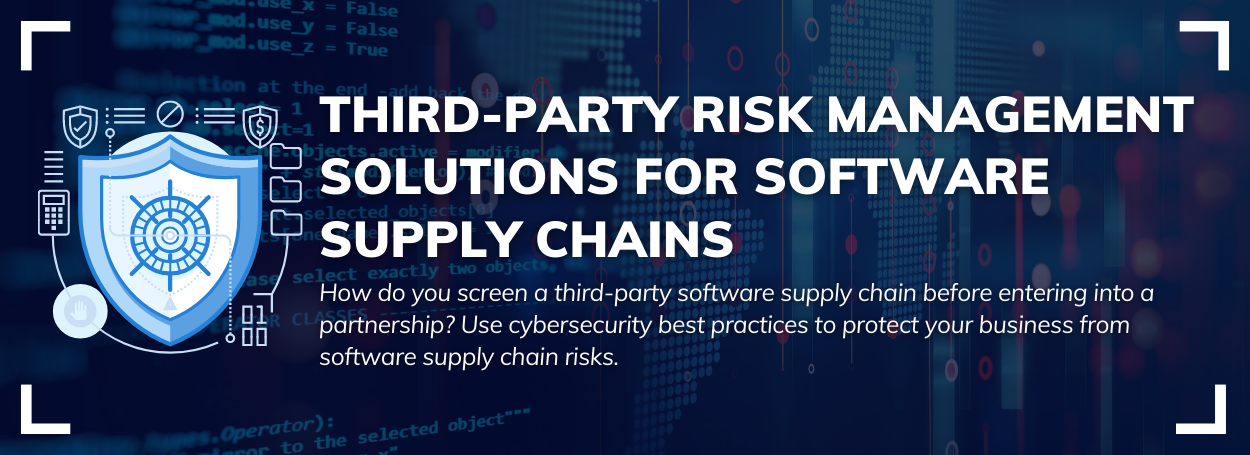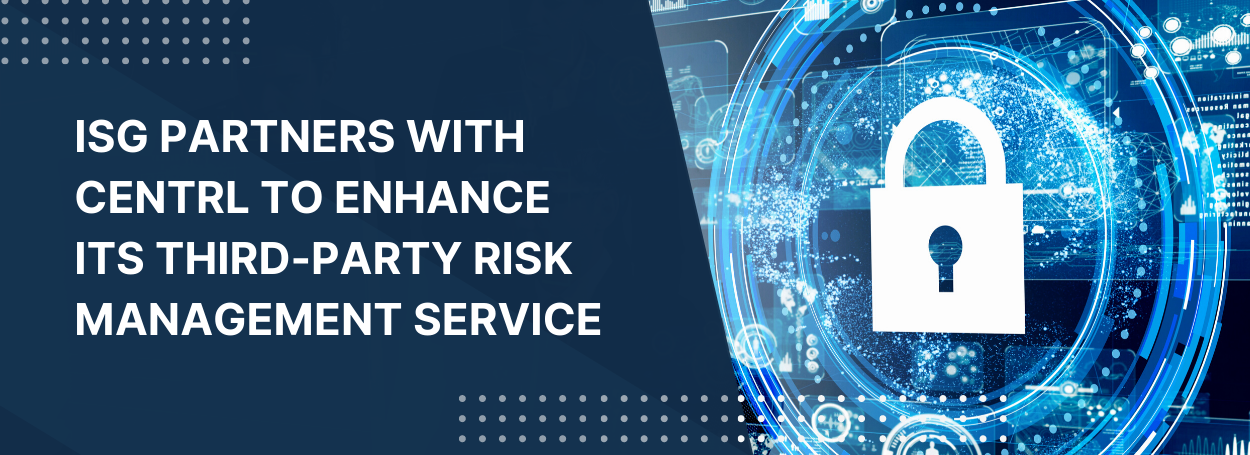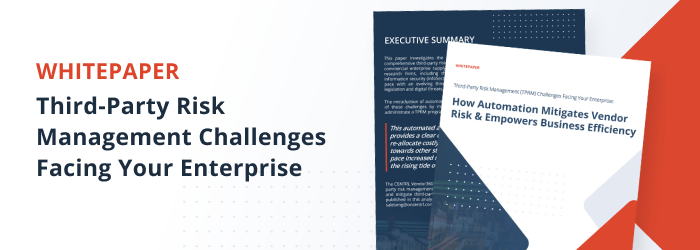Third-Party Risk Management Best Practices
Third-party vendors help improve your customer experience, lower service delivery costs, and let you focus on your core business. But they also introduce risk into your business. Your vendors’ infrastructure, security and compliance performance determine your risk exposure.
When a problem occurs, regulators are not swayed by finger pointing. Regulators look at your business holistically and not by what is sourced in-house or outsourced. This means that due diligence and ongoing third-party monitoring is mission critical. Unfortunately, there are still companies who rely on manual, ad-hoc methods to facilitate their third-party risk management. This is a short-sighted way to perform risk assessments. Companies need to progress to a platform dedicated to risk assessment and management. This change doesn’t necessarily mean spending hundreds of thousands of dollars and placing yourself into IT purgatory.
Shortfalls of an Inefficient Risk Management Process
Think of third-party risk management systems as consisting of three parts:
- A repository of vendor information and the risk framework.
- Monitoring vendor performance through all stages of vendor management, from initial onboarding to ongoing self-assessments to audits.
- Intelligent analysis, grading, reporting and data vivification.
Older third-party risk management systems solve the first problem; they are essentially centralized data stores for all vendor information and classifications. While some of these systems can send questionnaires and assessments, the process is often fragmented and inefficient. At CENTRL, we have seen companies that invest heavily in third-party risk management systems yet still send out Excel and Word questionnaires through emails and manually aggregate information. Comprehensive risk management should not be relegated to using inefficient and rudimentary office productivity tools.
Furthermore, compiling GBs of vendor data is only valuable if you control the ability to extract, distill, analyze and report information, which forewarns and delivers insight.
There is also a flipside to third-party management. Vendors are now being inundated with questionnaires and quarterly requests from their clients’ self-assessments and audits. From the vendors’ perspective, this is a costly, labor-intensive endeavor. They quickly realize that too many resources are allocated toward answering the same questions instead of deriving helpful business insights and analytics.
How to Eliminate the Inefficiencies**
Companies employing the best practices for third-party risk management use technology to organize, synthesize and analyze their vast amounts of data. These same companies relinquish the menial tasks associated with risk management and surface the data not conforming to company standards.
Forward-looking companies understand the amount of data involved with risk management will continue to grow while the resources needed to manage them will remain stagnant. The enigma associate with risk management is that companies that excel in risk management will never receive any accolades or notoriety because when vendor risk management is performed correctly, nothing happens. It’s those companies who mismanage their risk management that receive the notoriety (albeit the wrong kind of notoriety) and face the reputational and financial consequences.
Learn more about CENTRL’s affordable and intelligent third-party risk management application that can keep your company from becoming one that pays the price for a risk management misstep. Click on the link below for more information on CENTRL’s intelligent third-party risk management application and see how CENTRL has revolutionized the third-party risk management process.


